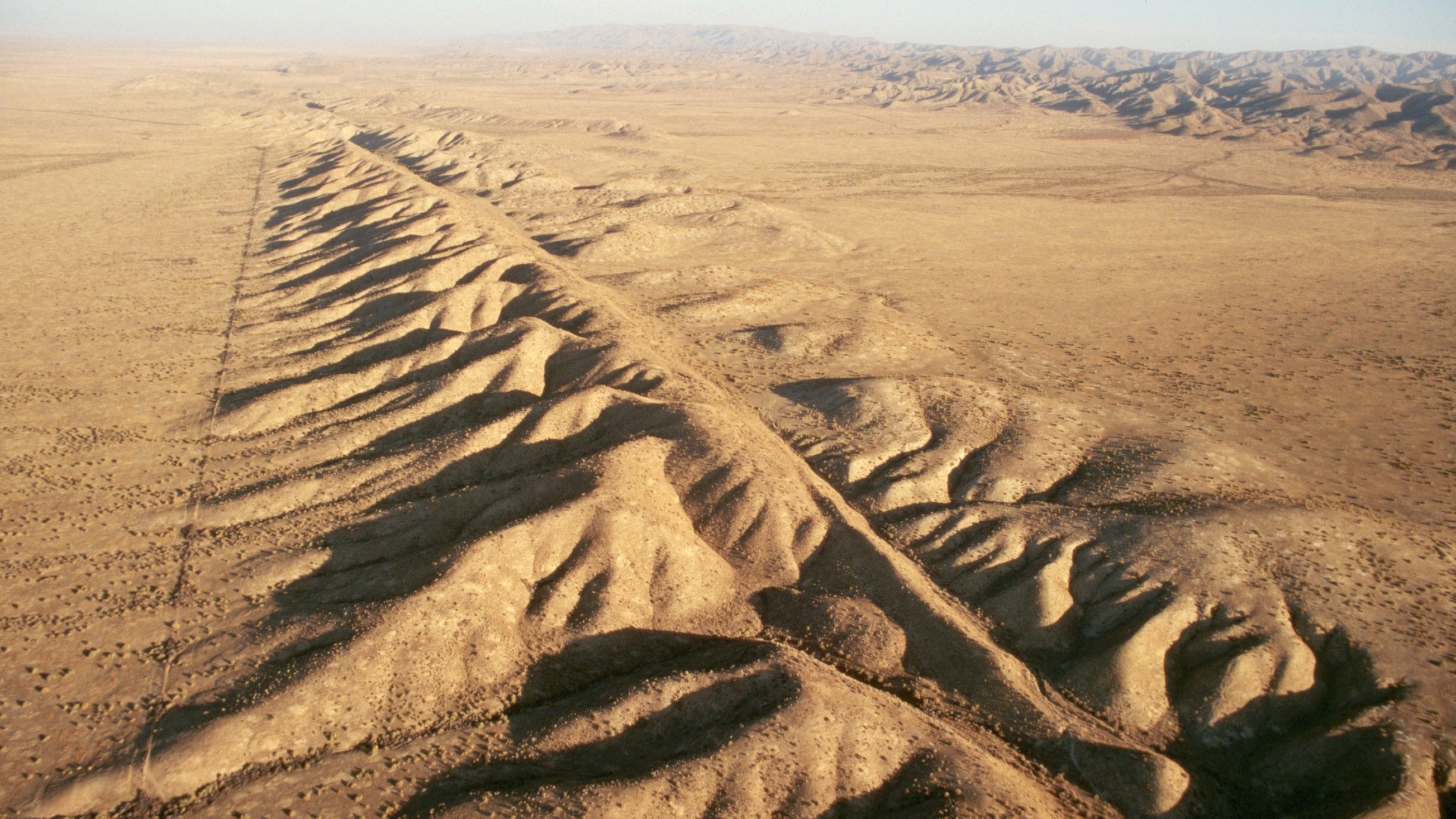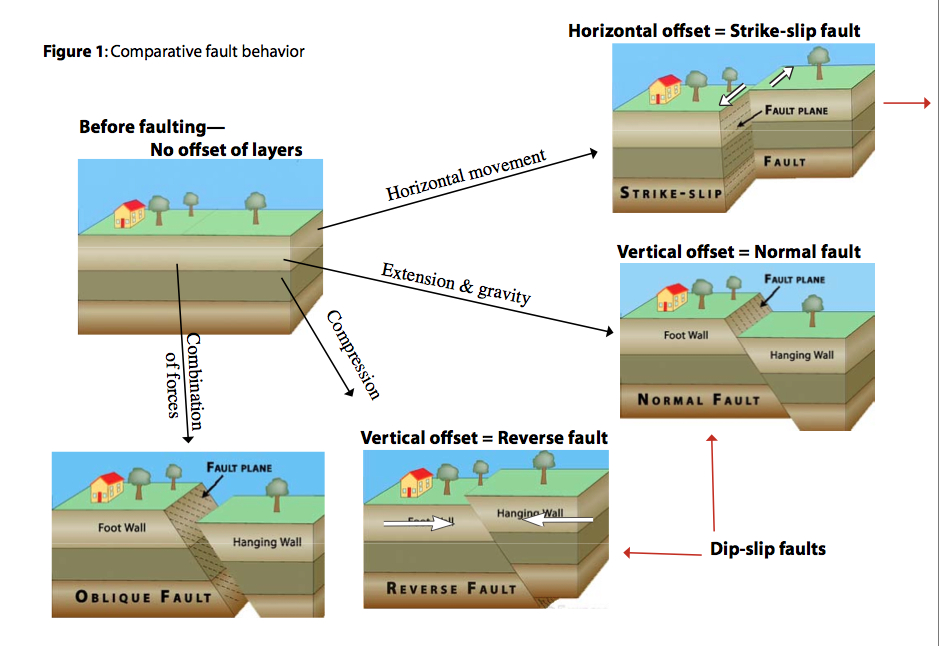Fault lines: Facts about cracks in the Earth
Faults in the Earth are categorized into three general groups based on the sense of slip, or movement, that occur along them during earthquakes.

Faults are fractures in Earth's crust where rocks on either side of the crack have slid past each other.
Sometimes the cracks are tiny, as thin as hair, with barely noticeable movement between the rock layers. But faults can also be hundreds of miles long, such as the San Andreas Fault in California and the Anatolian Fault in Turkey, both of which are visible from space.
Three types of faults
There are three kinds of faults: strike-slip, normal and thrust (reverse) faults, said Nicholas van der Elst, a seismologist at Columbia University's Lamont-Doherty Earth Observatory in Palisades, New York. Each type is the outcome of different forces pushing or pulling on the crust, causing rocks to slide up, down or past each other.
"Each describes a different kind of relative motion," van der Elst said.

Strike-slip faults occur where rocks are sliding past each other horizontally, with little to no vertical movement. Both the San Andreas and Anatolian faults that ruptured during the February 2023 earthquake in Turkey are strike-slip.
Normal faults create space. Two blocks of crust pull apart, stretching the crust into a valley. The Basin and Range Province in North America and the East African Rift Zone are two well-known regions where normal faults are spreading apart Earth's crust.
Reverse faults, also called thrust faults, slide one block of crust on top of another. These faults are commonly found in collisions zones, where tectonic plates push up mountain ranges such as the Himalayas and the Rocky Mountains.
Strike-slip faults are usually vertical, while normal and reverse faults are often at an angle to the Earth's surface. The different styles of faulting can also combine in a single event, with one fault moving in both a vertical and strike-slip motion during an earthquake.
All faults are related to the movement of Earth's tectonic plates. The biggest faults mark the boundary between two plates.
Seen from above, these appear as broad zones of deformation, with many faults braided together. "Plate boundaries are always growing and changing, so these faults develop kinks and bends as they slide past each other, which generates more faults," van der Elst said.
Plate boundaries where one tectonic plate dives beneath another are called subduction zones. Subduction zones generate some of the most powerful quakes on Earth. For instance, both the 2011 Tohoku earthquake and the 2004 Banda Aceh earthquake off Indonesia occurred due to rupture at thrust faults on subduction zones.
Related: The 20 largest earthquakes in recorded history
Individual fault lines are usually narrower than their length or depth. Most earthquakes strike less than 50 miles (80 kilometers) below Earth’s surface. The deepest earthquakes occur on reverse faults at about 375 miles (600 km) below the surface. Below these depths, rocks are probably too warm for faults to generate enough friction to create earthquakes, van der Elst said.
Earth's biggest exposed fault
For nearly a century, scientists have been aware of a 4.47 mile-deep (7.2 km) oceanic abyss — known as the Weber Deep — located off the coast of eastern Indonesia in the Banda Sea. But until recently, they had been unable to explain how it got so deep.
The Weber Deep is the deepest point in the ocean that is not in a trench; trenches are formed during the subduction of two tectonic plates — when one slides under the other. However, the Weber Deep is a forearc basin, which is essentially a depression located in front of the Banda arc (curved chain of volcanic islands), according to New Atlas.
This Banda Detachment fault represents a rip in the ocean floor that is exposed for more than 23,166 square miles (60,000 square km). In fact, in some areas, the amount of extension was so severe that there was no longer any trace of oceanic crust, according to New Atlas.
Additional reporting by Traci Pedersen, Live Science contributor.
Sign up for the Live Science daily newsletter now
Get the world’s most fascinating discoveries delivered straight to your inbox.











